Oyster Sauce
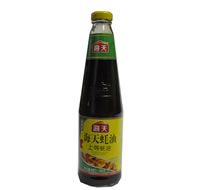
Oyster sauce is a traditional seasoning commonly used in Guangdong, and is one of the largest products in the sauce category. It is made from oysters, which are known as the "milk of the sea", and is boiled to extract the juice and concentrate it, then refined with additional ingredients. It is also the main ingredient in traditional Cantonese dishes such as beef with mushrooms in oyster sauce, green vegetables in oyster sauce and vermicelli in oyster sauce. Oyster sauce is very convenient to use and can be used to season a wide range of savoury foods. It can be used for noodles, vegetables, meat, fish, soups, etc.
Soy Sauce
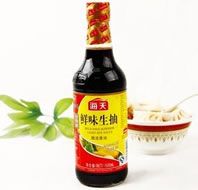
Soy sauce is a lighter and reddish-brown colour and is the most important seasoning for colouring dishes. It is used for general cooking and has a salty taste. It is mainly used for seasoning and is light in colour, so it is used more often for general stir-fries or cold dishes. Raw soy sauce is a variety of soy sauce, which is made from soybeans and flour as the main raw materials, artificially accessed seed currents, fermented by natural sunlight. Raw soy sauce is red in colour, tasty and harmonious, with a strong black bean flavour, clear and transparent body and unique flavour.
Sriracha
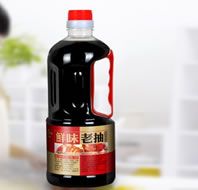
Old soy sauce is different from soy sauce in that it is a thick coloured soy sauce made from raw soy sauce with the addition of caramel and a special process, ideal for colouring meat. The word "soy" means to extract. "It is made from high quality soybeans and wheat, which are fermented and matured, while Sriracha is a thick coloured soy sauce made by adding caramel to raw soy sauce, which is ideal for enhancing the colour of meat.
Vinegar
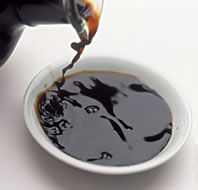
Vinegar is a fermented sour liquid condiment made from starchy grains (sorghum, yellow rice, glutinous rice, indica rice, etc.) as the main ingredient and grain bran, rice bark, etc. as auxiliary ingredients, brewed through fermentation. Vinegar is one of the main condiments in cooking, with a sour taste, and is the main raw material for the sweet and sour taste. It can remove fishy and greasy, increase freshness and fragrance, reduce the loss of vitamin C during the heating process of food, and dissolve calcium in cooking materials for human absorption. Some of the more famous varieties are the balsamic vinegar from Zhenjiang, Jiangsu and the old aged vinegar from Shanxi.
Rice vinegar
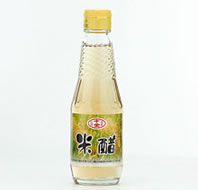
Rice vinegar is made from grain and fruit such as grain, sorghum, glutinous rice, barley, corn, sweet potato, wine lees, red dates, apples, grapes and persimmons, which are brewed through fermentation. Depending on the processing method, rice vinegar can be further divided into smoked vinegar, balsamic vinegar, bran vinegar and so on. Rice vinegar has such wonderful nutrition that it has been developed as a new type of health drink by foreign nutrition experts and is also called "rose rice vinegar". It is suitable as a condiment for cold dishes and snacks and can increase appetite.
Cooking wine
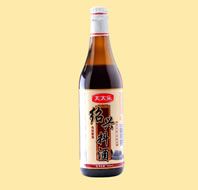
Cooking wine is a term used for cooking wine, mainly used when cooking animal ingredients such as meat, poultry, seafood and eggs. It is added together with other seasonings. During the cooking process, the alcohol helps to dissolve the organic matter in the dish and the small amount of volatile components in the other spirits interact with the ingredients to produce new flavours and reduce the fishy and greasy taste. It is said that alcohol reacts with the carboxylic acids in the food to produce aromatic and volatile esters. After cooking, most of the alcohol is evaporated by heat and does not remain in the dish. The main function of cooking wine is to remove fishy and fresh ingredients, and it is mainly used for meat, fish, shrimp and crab dishes. In addition, many people run out of cooking wine and use white wine or beer instead.
Sesame oil

Sesame oil, commonly known as sesame oil, is a semi-dry edible vegetable oil made from sesame seeds and is a popular condiment for consumers. Sesame oil is divided into three processes: ordinary sesame oil, machine pressed sesame oil and small mill sesame oil. Both machine pressed sesame oil and small mill sesame oil contain 35.0-49.4% oleic acid, 37.7-48.4% linoleic acid and 0.4-1.2% arachidic acid. The digestive absorption rate of sesame oil is 98%. Sesame oil is an excellent edible oil with good eating quality and high nutritional value.
Corn oil

Corn oil, also known as corn oil and corn germ oil, is the oil extracted from the corn germ. Corn germ fat content ranges from 17% to 45%, accounting for approximately 80% or more of the total corn fat content. The fatty acids in corn oil are characterised by a high unsaturated fatty acid content of 80 to 85 per cent. Corn oil itself does not contain cholesterol and it has a solubilising effect on the accumulation of cholesterol in the blood, thus reducing the hardening effect on the blood vessels. It has a positive effect on the prevention and treatment of age-related diseases such as arteriosclerosis and diabetes.
